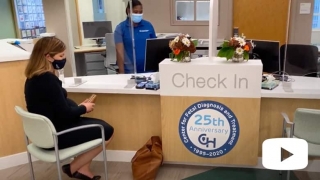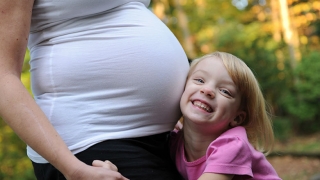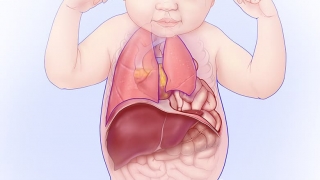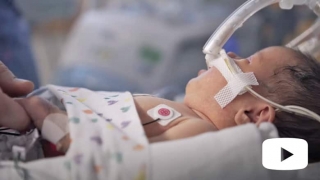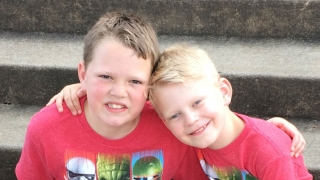For the Kukan family, Thanksgiving of 2005 was definitely a time to be grateful. It was the day they took their little “miracle baby” home against all odds. Laura Kukan underwent two surgeries in her first months of life to repair a hole in her diaphragm and related complications.
A 20-week alpha fetoprotein test showed a genetic defect in the baby Christa Kukan was carrying. The specialist in her North Jersey home town gave the baby a zero percent chance of survival.
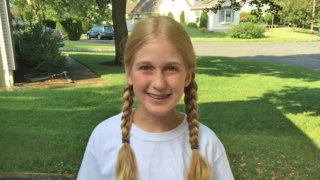 While further testing showed no signs of chromosomal or heart defects, the result of an ultrasound indicated that baby Laura had a left congenital diaphragmatic hernia (CDH), a hole in the diaphragm (the muscle that separates the chest cavity from the abdominal cavity), which allows some of the abdominal organs to move up into the chest cavity. CDH can be life-threatening, as it can lead to pulmonary hypoplasia — underdevelopment of the lungs.
While further testing showed no signs of chromosomal or heart defects, the result of an ultrasound indicated that baby Laura had a left congenital diaphragmatic hernia (CDH), a hole in the diaphragm (the muscle that separates the chest cavity from the abdominal cavity), which allows some of the abdominal organs to move up into the chest cavity. CDH can be life-threatening, as it can lead to pulmonary hypoplasia — underdevelopment of the lungs.
The specialist then recommended Christa and husband, Michael, seek the opinion of The Children’s Hospital of Philadelphia.
Grim diagnosis, but some hope
Although the diagnostic evaluation showed a very severe congenital diaphragmatic hernia with liver herniation and small lungs, “the doctors there were a little more optimistic,” remembers Christa. “They gave Laura a 65 percent chance.”
Christa’s pregnancy was followed closely by N. Scott Adzick, MD, and the fetal surgery team at the Hospital's Center for Fetal Diagnosis and Treatment. She gave birth at the Hospital of the University of Pennsylvania on Sept. 12.
“The first positive sign was that she (Laura) didn’t need ECMO,” says Christa. “But she was put on a ventilator to help her breathe.”
ECMO (extracorporeal membrane oxygenation) is a temporary heart/lung bypass machine that some babies with CDH need to help them survive the first few days or weeks following birth.
Surgery and continuing care
 Laura stops by to say hi to Andrea, one of her nurses, during a return visit to CHOP.
Within 12 days, Laura was stable enough to have surgery to repair the hole in her diaphragm. After the surgery, she remained on the ventilator, as well as medication for pulmonary hypertension, high blood pressure in the arteries of the lungs.
Laura stops by to say hi to Andrea, one of her nurses, during a return visit to CHOP.
Within 12 days, Laura was stable enough to have surgery to repair the hole in her diaphragm. After the surgery, she remained on the ventilator, as well as medication for pulmonary hypertension, high blood pressure in the arteries of the lungs.
Then came a minor setback. Laura, like many babies with CDH, suffered from gastroesophageal reflux (GERD), which allows acid and fluids from the stomach to move up into the esophagus and can cause heartburn, vomiting, feeding problems, or lung problems due to aspiration.
On Nov. 11, she underwent a Nissen fundoplication, surgery that wraps the upper part of the stomach around the esophagus and sews it in place to help prevent food from refluxing up.
Going home with some challenges
Later that month — on Thanksgiving Day — Laura went home on just two medications and a feeding tube since she wasn't taking any food by mouth yet.
Christa and Michael learned how to insert and care for the tube while still at Children’s Hospital. It was a bit intimidating at first, but for big sister, Michelle, 2½ , the feeding tube was business as usual.
“Michelle would feed her dolly with a stomach tube,” explains Christa. “And when we cleaned the site (of Laura’s tube), Michelle cleaned the dolly’s site.”
Thankful to CHOP
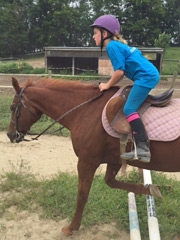 These days, Laura is a typical middle school student. She stays busy with many activities, including school choir and Girl Scouts. After several years of Girls on the Run, she's putting her conditioning to good use playing field hockey. She also enjoys taking horseback riding lessons.
These days, Laura is a typical middle school student. She stays busy with many activities, including school choir and Girl Scouts. After several years of Girls on the Run, she's putting her conditioning to good use playing field hockey. She also enjoys taking horseback riding lessons.
Both Michael and Christa credit Children’s Hospital of Philadelphia with saving their baby’s life, and with helping them to cope with the every day stress of having a baby with CDH. The Hospital's multidisciplinary Pulmonary Hypoplasia Program provided the follow-up care Laura needed as she grew, bringing together the expertise of multiple pediatric medical specialists in one setting.
“From the time we started being followed prenatally until the day we left, we were treated like family, not patients,” says Christa, adding that the couple is particularly grateful to the Newborn/Infant Intensive Care Unit nurses who, “take such special care of your child.”
If she could tell other moms-to-be one thing about carrying a baby with CDH, Laura says she would tell them: “Don’t give up hope. Our little miracle baby defeated the odds, yours can too.”
Originally published June 2009
Updated December 2016
